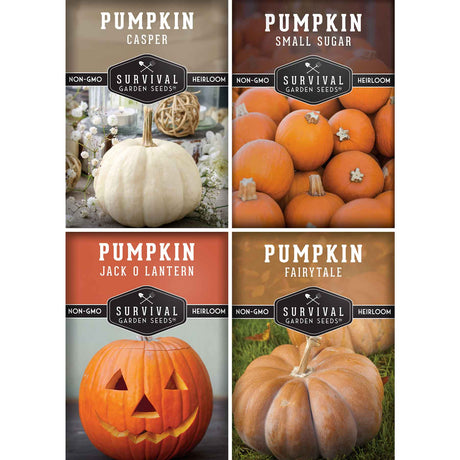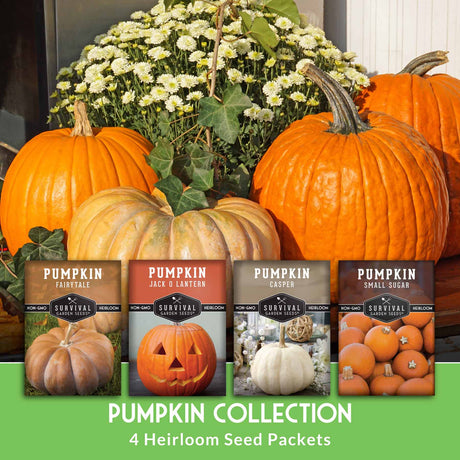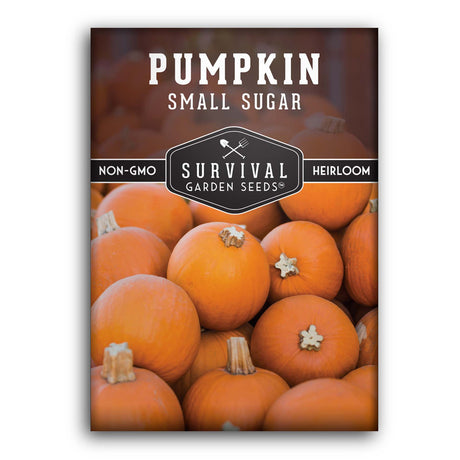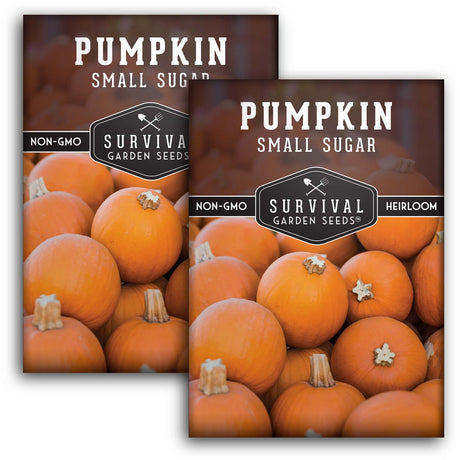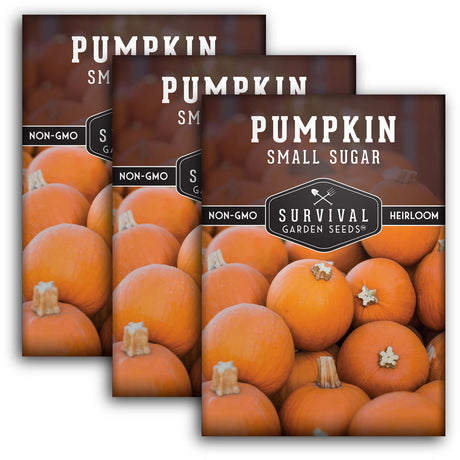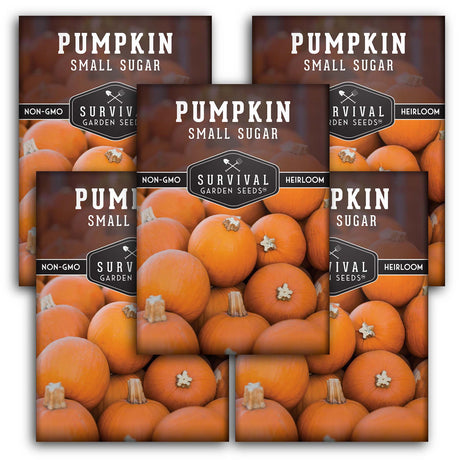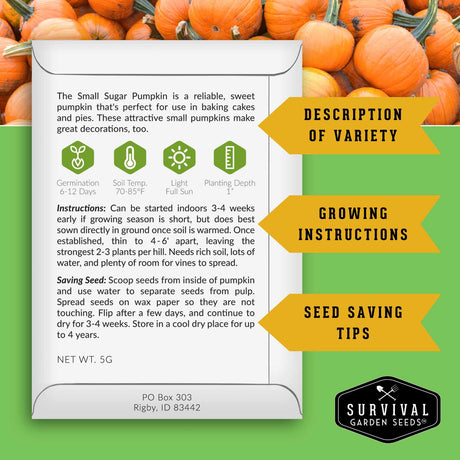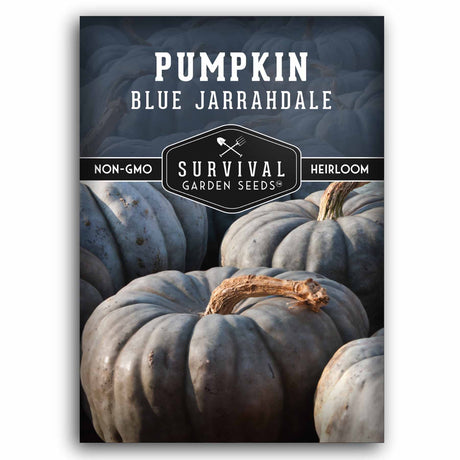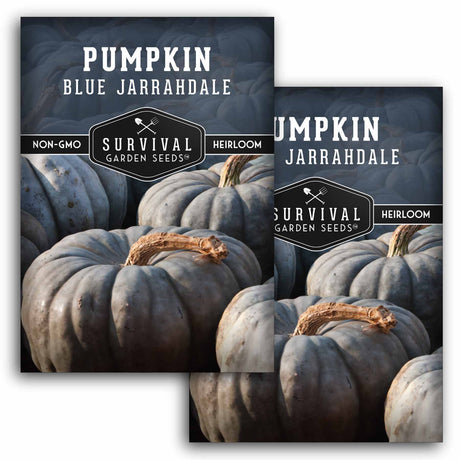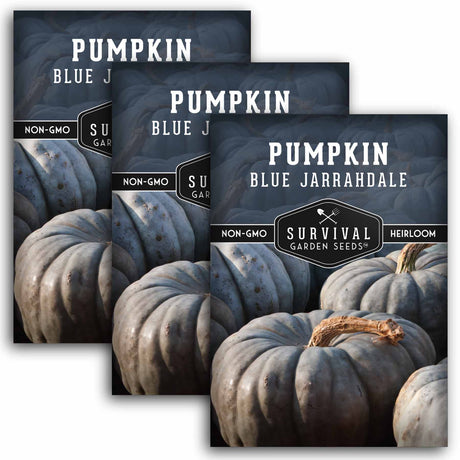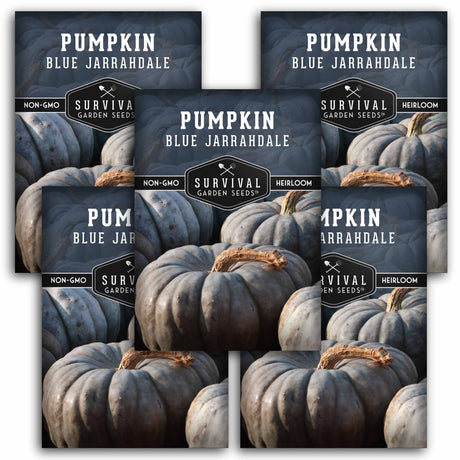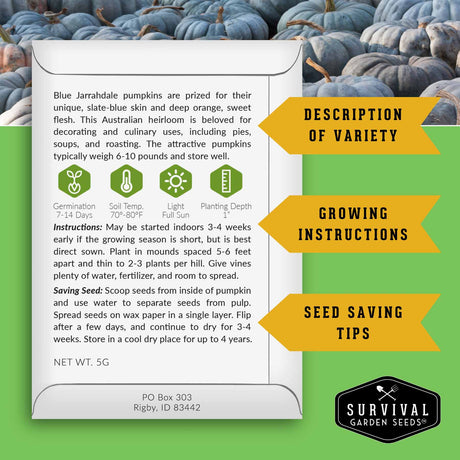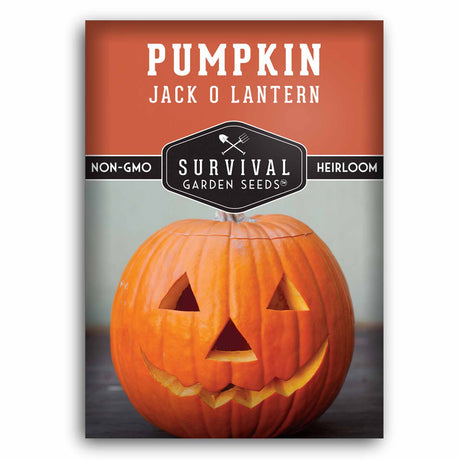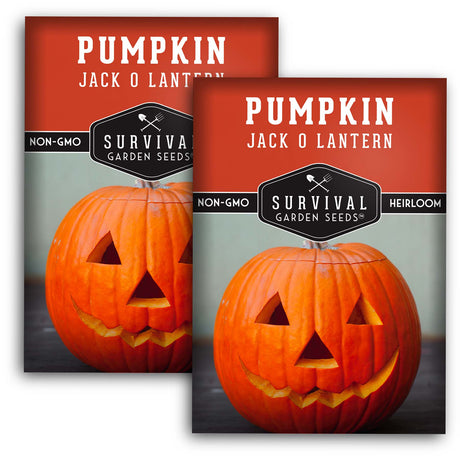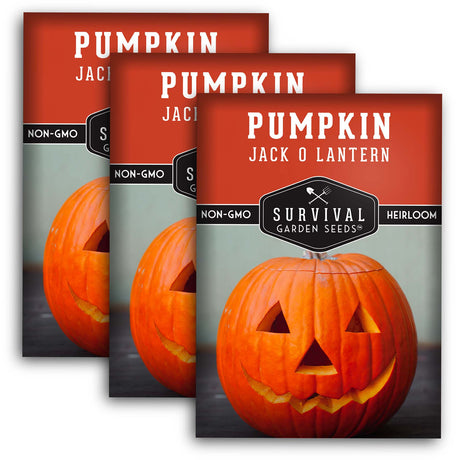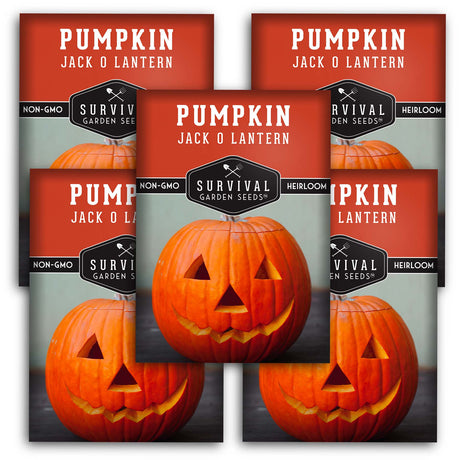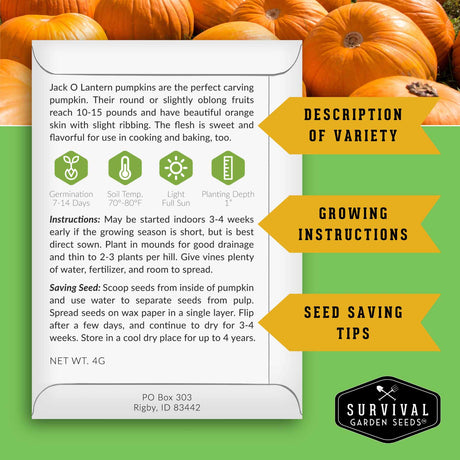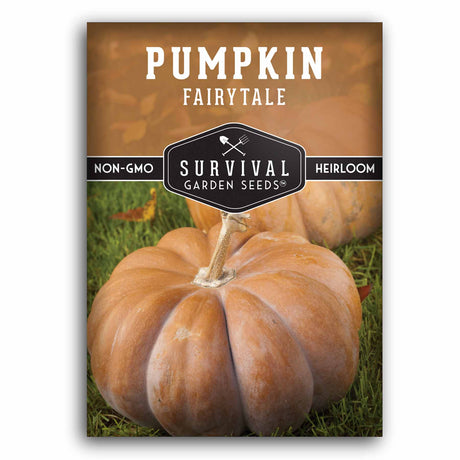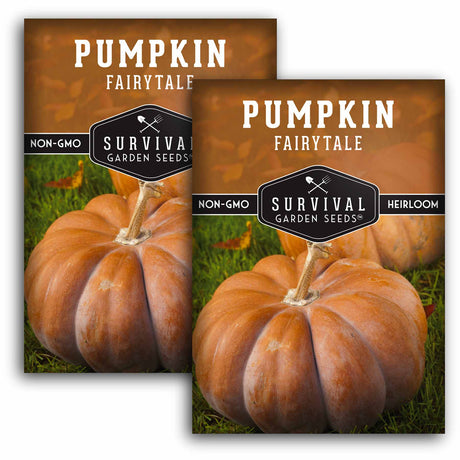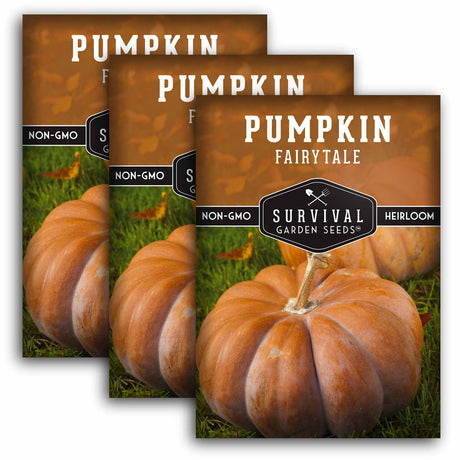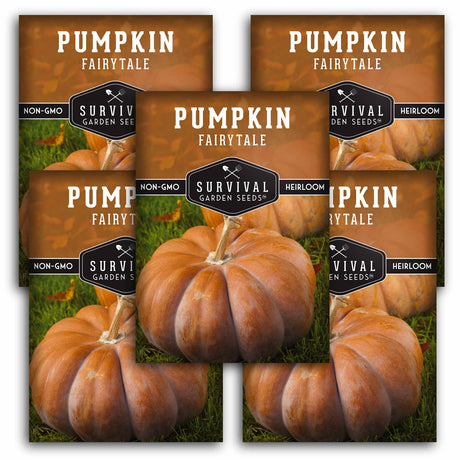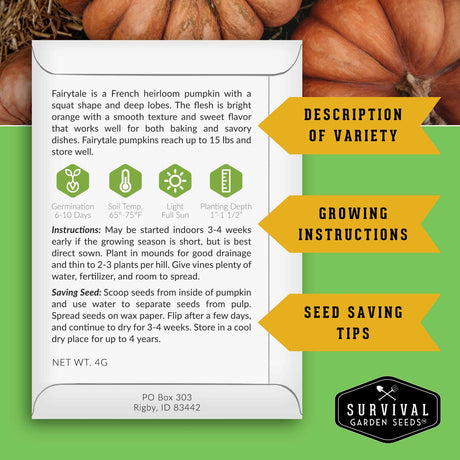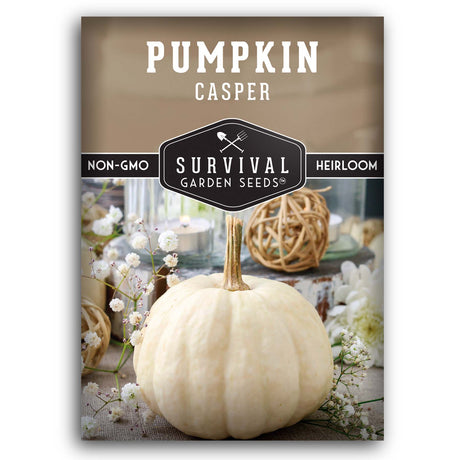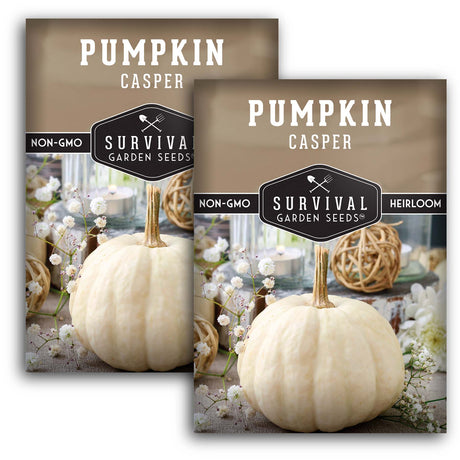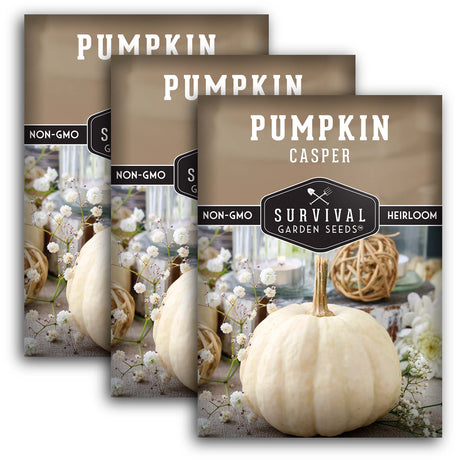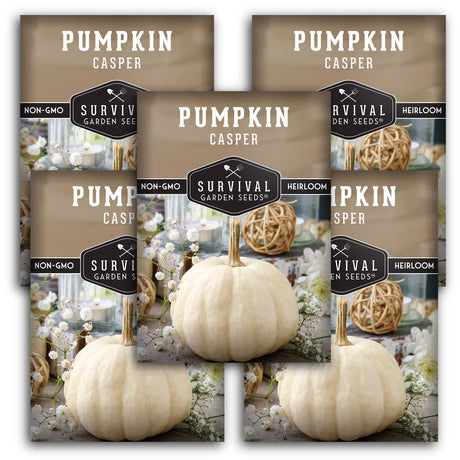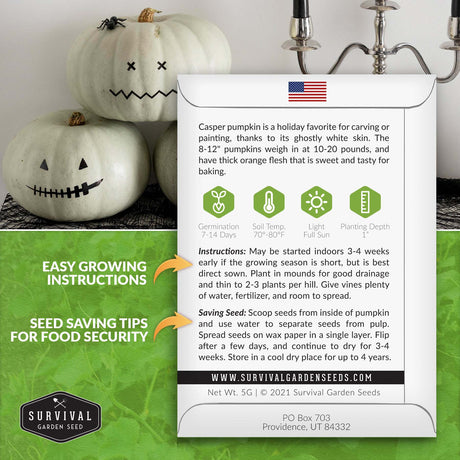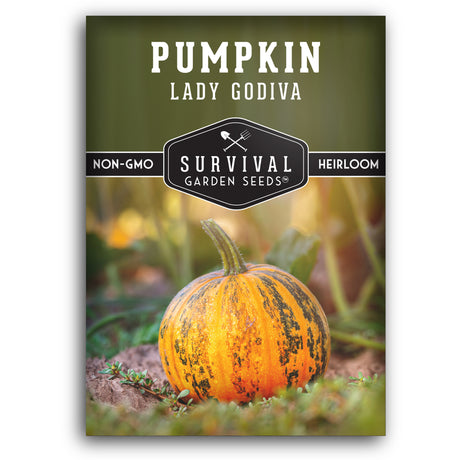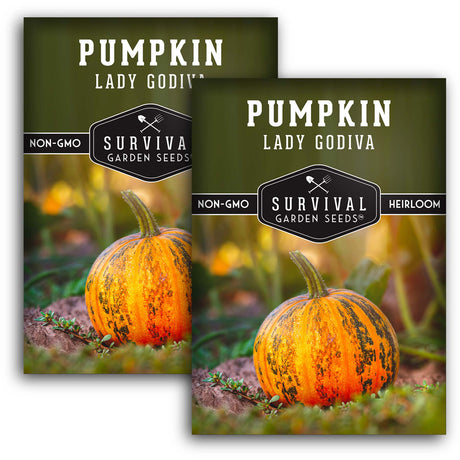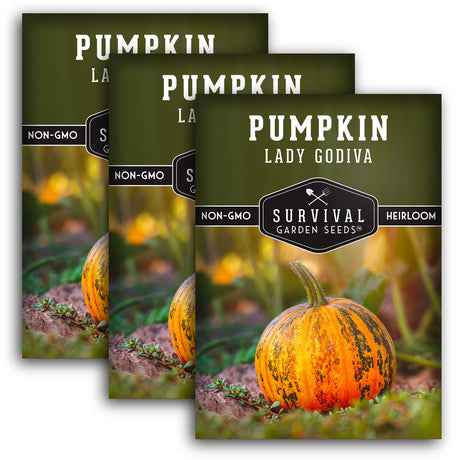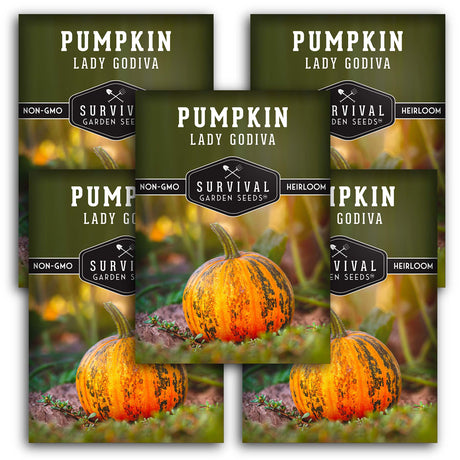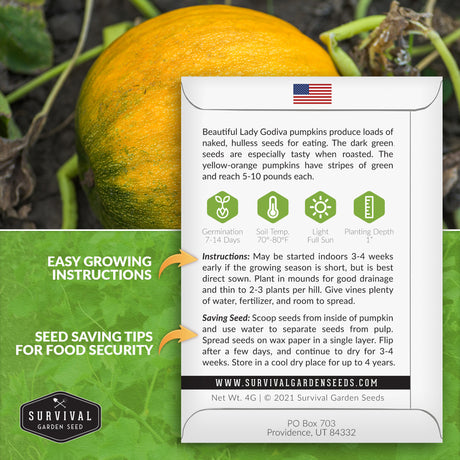Survival Garden Seeds offers pumpkin seeds for gardeners looking to add this iconic autumn crop to their gardens. Our non-GMO seeds are selected for their high yield and quality fruits, ensuring a bountiful harvest perfect for carving, cooking, or roasting the seeds.
Growing Pumpkin Seeds in Your Garden
- Ornamental and edible vegetable
- Large sprawling vines
- Nutrient-rich edible seeds
- Non-GMO, heirloom seeds
INTRODUCING PUMPKIN SEEDS
Pumpkins are the main attraction of fall decorations and recipes, from jack-o'-lanterns to pies. These plants are part of the Cucurbitaceae family, which also includes melons and cucumbers. Pumpkins originally come from North America. They thrive in areas that provide warm soil and plenty of sunlight, and are suitable for growing in USDA hardiness zones 3 to 11.
HOW TO PLANT PUMPKIN SEEDS
Planting pumpkin seeds directly in the garden is ideal. Sow when the danger of frost is over, and the soil is warm. Seeds should be planted an inch deep in mounds. Space plants them about 4 to 6 feet apart, providing ample room for vines to spread. Pumpkins are heavy feeders, so prepare the soil with plenty of compost or aged manure for best results.
MAINTAINING PUMPKIN PLANTS
Once established, pumpkin plants need moderate maintenance. Water them regularly, especially during dry periods, keeping the soil consistently moist. As fruits develop, you might need to reposition them. Straw or tarp can be placed under growing pumpkins to prevent rotting. Monitor for pests during growth. Squash bugs and fungal diseases, like powdery mildew, can affect the large leaves and stems. To encourage larger pumpkins, selectively prune some fruits when they’re small.
Start growing pumpkins this season. They will be ready just in time for fall festivities and delicious pies! This is a rewarding vegetable that provides beauty and joy for all ages.


